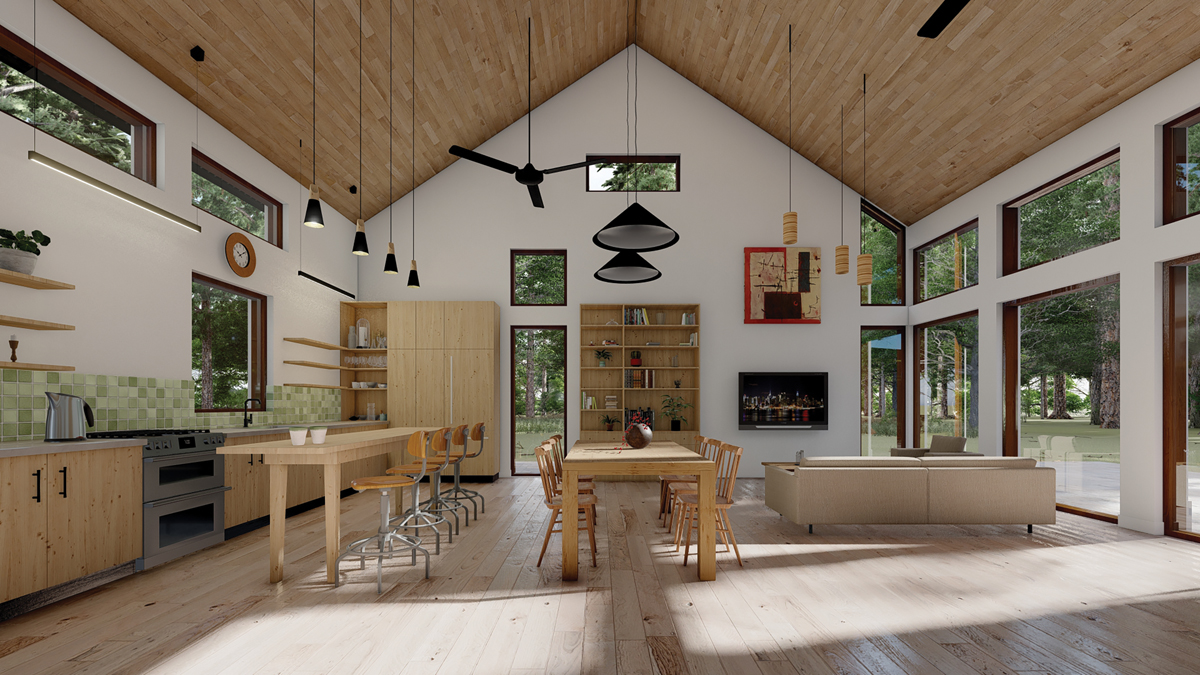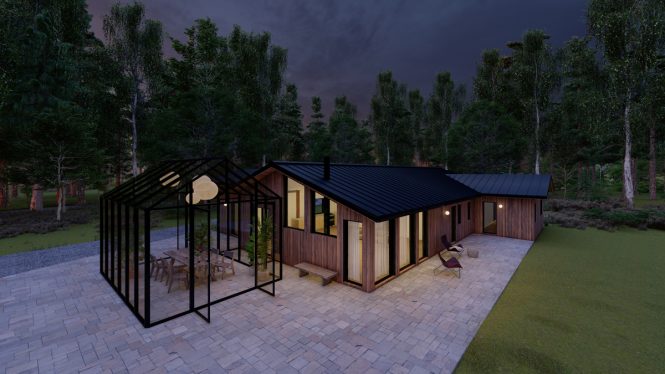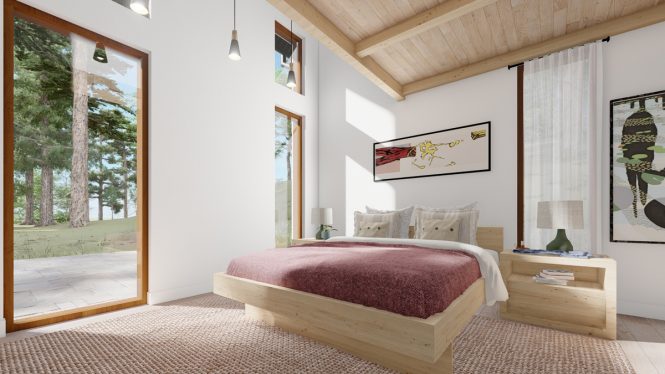Building Healthier Homes With Hemp
Woodstock Hempcrete Brings the Building Material of the Future to the Hudson Valley
Presented by Woodstock Hempcrete | Spring 2023 | House Feature
From textiles to bioplastics, industrial uses of hemp have been gaining in popularity in recent years. In Europe, the quick-growing, sustainable plant has come to prominence as one of the most eco-friendly materials you can build with today. While the technology has been slow to take off in the US construction industry, design-build firm Woodstock Hempcrete is bringing the innovative new material to the Hudson Valley in the form of high-performance homes that are not only good for the environment, but also healthy to live in.
“It’s not easy to find a home that’s built with natural, healthy materials,” says Paul Petrov, founder of Woodstock Hempcrete. He started the company after his work in commercial interiors and high-end residential construction in New York City went on hiatus at the beginning of the pandemic. “But if you want a house free of toxic materials that’s not going to make you sick now or 100 years from now, I’m your guy.”
As its name suggests, hempcrete is a natural hemp-based building material. It’s made by mixing hemp hurd—the core of the plant’s stalk—with hydraulic lime mortar as a binder. Despite the simplicity of its ingredients, hempcrete has a wide array of benefits.

In Petrov’s homes, precast hempcrete blocks from leading Belgian manufacturer IsoHemp replace synthetic foam or fiberglass insulation, resulting in a breathable building envelope that is nontoxic, noncombustible, resists mold and mildew, keeps temperatures stable, and regulates humidity at 55 percent year-round. “The energy performance of hempcrete is fantastic and goes well beyond ‘R value,’” Petrov says.
Hempcrete also combats climate change, absorbing carbon at multiple points in the process. As the hemp plant grows, it sequesters carbon in the soil. During fabrication, as the lime mortar in the precast blocks cures, it absorbs atmospheric carbon in a process known as carbon-sinking. The blocks continue to absorb carbon as the finished house breathes.
The material’s carbon absorption is what sets it apart from typical multilayered Passive House assemblies, Petrov says. “The Passive House assemblies can be amazing and superbly built, but they can’t sink carbon from the atmosphere like hempcrete does,” Petrov says. “And the humidity inside a hempcrete house is controlled by the natural materials used, not by a machine.”

Petrov currently has one of his original energy-efficient hempcrete homes under construction in Gallatin and four parcels in development in Stone Ridge. The home designs draw on the sleek architectural legacies of midcentury California ranch houses, Japanese and Scandinavian cabins, as well as more modern multilevel homes that gracefully follow the landscape. “They’re not mud-huts,” Petrov says. “These are modern, efficient, and very well-built houses. The interiors are warmly minimal, open, and spacious.”
Bespoke layouts and finishes ensure individuality in the Stone Ridge enclave. Offerings range from an 1,800-square-foot, three-bedroom ranch to a two-story, three-bedroom “cabin” of 2,405 square feet. Larger multilevel designs are also available. The homes’ features include triple-glazed European windows, standing-seam metal roofing, wood-paneled ceilings, polished concrete floors and concrete countertops, custom kitchen cabinetry, and a two-car carport. Upgrades include a one-bedroom accessory dwelling and everything from a suspended fireplace and various exterior finishes to an 18-by-40-foot Gunite pool.
Petrov is also prepping land in Catskill, Saugerties, and Palenville for other sites this spring. His eye is trained at the horizon line of offering a more affordable price point, allowing more homeowners to enjoy all the benefits of a natural, breathing building envelope.
